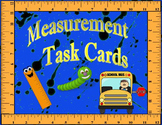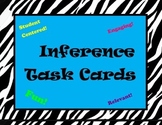Are you tired.........of having some of your students fall through the cracks and just not understand the material that you are trying so desperately to teach them.
Are you tired.........of having some students so disengaged that they refuse to work no matter what you try to do.
 If you are like me, I struggled with trying to reach every student. No matter what I did, I felt like it just wasn't reaching every student. I spent countless hours trying to come up with ideas for each student. It would help for a while, then sometimes the progress just stopped. Da da da da.......Enter Guided Math!!! I decided to try it this year for the first time. Now I know this is not a new concept. I have heard about it for years and even did a workshop model for writing.
If you are like me, I struggled with trying to reach every student. No matter what I did, I felt like it just wasn't reaching every student. I spent countless hours trying to come up with ideas for each student. It would help for a while, then sometimes the progress just stopped. Da da da da.......Enter Guided Math!!! I decided to try it this year for the first time. Now I know this is not a new concept. I have heard about it for years and even did a workshop model for writing.Guided math was the answer that I had been looking for. Here are some reasons why guided math rocks!!!
Whole group instruction does not reach every student
We all have a variety of students in our class including struggling students, disengaged students that are daydreaming , high flyers that are longing for a challenge, students with special needs, etc. Guided math allows you the flexibility to meet with small groups of students to teach them at their level. This is a great way to differentiate instruction. While you are meeting with small groups, the rest of the students are actively engaged in meaningful activities to enhance their understanding. |
| Some of your students may look like this! |
Teachers get to really know their students
During small group time, teachers meet with groups of students that have roughly the same ability levels. During this time, students are more willing to take risks. You will be able to pinpoint any misconceptions about the topic that was taught during whole class instruction.
My students love the short lesson followed by their choice of activity. This is empowering to them and it really gives me a chance to meet one on one with them.
This is how a typical class time is divided up.
1. Mini lesson- 10-15 minutes
2. Rotation 1 - 10-15 minutes
3. Rotation 2 - 10-15 minutes
4. Rotation 3 - 10-15 minutes
5. Class comes back together to recap the lesson and discuss. 5 minutes
We have three rotations that we do most days. Each rotation is about 10-15 minutes. I set a timer and the students choose which station they would like to go to and place their clip on that poster. Here is a picture:
This is how a typical class time is divided up.
1. Mini lesson- 10-15 minutes
2. Rotation 1 - 10-15 minutes
3. Rotation 2 - 10-15 minutes
4. Rotation 3 - 10-15 minutes
5. Class comes back together to recap the lesson and discuss. 5 minutes
We have three rotations that we do most days. Each rotation is about 10-15 minutes. I set a timer and the students choose which station they would like to go to and place their clip on that poster. Here is a picture:
I put the clip with their name on it in that little basket on the ledge.
Here are some task cards that I like to use in my guided math stations.
Do you use guided math? Let me know how it works in your classroom. I'd love to hear new ideas!






No comments:
Post a Comment